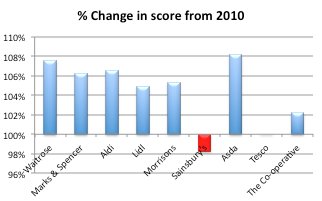 Could a handful of customers be driving the majority of your profits?
Could a handful of customers be driving the majority of your profits?
It's well known that the pareto rule typically applies within customer value with around 20% of customers representing 80% of profits. However, even within this 20%, this can still skew to a smaller number of customers who contribute a large percentage of profits.
Ladbrokes apparently discovered this to their cost recently, with just one customer reportedly being responsible for the majority of the fall in high-roller profits from £66.9m to just £5m. This translated as a 20% drop in overall total profit from £235.4m to £207.3m.
The gaming industry typically suffers more from this skew in large revenues from a small number of customers with some areas of the online gaming side of the industry seeing upwards of 80% of revenues from a low single digit percentage of customers.
Knowing this, Ladbrokes introduced the OddsOn loyalty programme within their retail stores to get better visibility of their over the counter (OTC) and fixed odds betting terminal (FOBT) customers. This is something Ladbrokes is working hard to exploit, saying in their latest interim results:-
We have made good progress in 2010 in defining key customer segments and will shape marketing activity around them, using the valuable information on our customers that OddsOn! is providing. Trials adopting this approach are already beginning to show encouraging results. We have also introduced a dedicated service team aligned across all products, to manage high value customers.
Whilst this customer value segmentation might not be as severe in other industries, it's still just as important. Within speciality retail for example, one retailer sees 30% of customers representing almost 70% of sales revenue. This is the difference between an annual spend of around £60 for low loyal customers versus over £400 for high.
Importantly though, these customers not only spend more, they visit more - over 7 times more. This means if customers don't like changes to your prices, products or customer service, these high loyal customers will be the first to notice. Using the speciality retail example above, if just 10% of these customers defect, whilst they would only represent 3% of customers overall, it would result in a 7% drop in profits.
Not all business are impacted as much as Ladbrokes seems to have been by a small number of high value customers, but at least they know who these customers are. The picture could be much worse if high value customers were defecting, profits were falling and ultimately you had no idea why.
The real value of loyalty programmes is in the insight and visibility on customers they bring. High-rollers aside, this is something which Ladbrokes will increasingly be leveraging as their OddsOn programme expands and something which gives them first mover advantage over their competitors.

